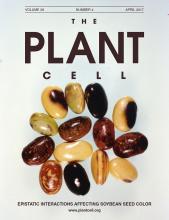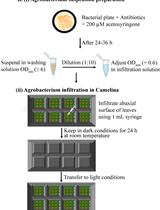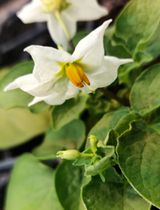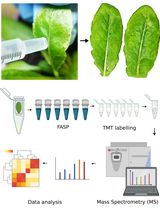- EN - English
- CN - 中文
Boron Uptake Assay in Xenopus laevis Oocytes
在非洲爪蟾卵母细胞系统中进行硼的吸收分析实验
发布: 2018年03月05日第8卷第5期 DOI: 10.21769/BioProtoc.2755 浏览次数: 8193
评审: Tie LiuHarrie van ErpAnonymous reviewer(s)
Abstract
Boron (B) is essential for plant growth and taken up by plant roots as boric acid. Under B limitation, B uptake and translocation in plants are dependent on the boric acid channels located in the plasma membrane. Xenopus leavis oocyte is a reliable heterologous expression system to characterize transport activities of boric acid channels and related major intrinsic proteins (aquaporins). Here, we outline the protocols for expression of boric acid channels and boric acid uptake assay in Xenopus leavis oocytes.
Keywords: Boric acid (硼酸)Background
Boron is essential for plant growth but is toxic when it is accumulated. Boron has structural functions in the cell wall through cross-linking of pectic polysaccharides at rhamnogalacturonan II regions (Funakawa and Miwa, 2015). In solution, B exists primarily as boric acid at physiological pH [B(OH)3 + H2O ⇆ B(OH)4- + H+ (pKa = 9.24)]. Boric acid is a small neutral molecule and thus shows significant passive diffusion across biological membranes (Dordas et al., 2000). In addition, plants utilize boric acid channels belonging to major intrinsic protein (MIP, aquaporin) family and borate exporters (BOR family) to maintain B homeostasis (Takano et al., 2008).
Initially, maize PIP1 was expressed in Xenopus leavis oocytes and shown to facilitate boric acid uptake by 30% over the water-injected oocytes (Dordas et al., 2000). Then, Arabidopsis NIP5;1 was shown to facilitate boric acid uptake five to nine-fold over the water-injected oocytes (Takano et al., 2006). Together with the finding that Arabidopsis mutants lacking NIP5;1 activity showed lower B uptake into roots and severe growth defects under low B conditions, NIP5;1 was identified as a boric acid channel. NIP5;1 homologs, NIP6;1 and NIP7;1 from Arabidopsis, Lsi1 (NIP2;1) from rice, NIP2;1 from barley, and TLS1 (NIP3;1) from maize were also shown to facilitate boric acid uptake using Xenopus oocytes (Tanaka et al., 2008; Li et al., 2011, Mitani-Ueno et al., 2011; Schnurbusch et al., 2010; Durbak et al., 2014). Importantly, OsLsi1 transported boric acid, silicic acid, arsenite, and water, and AtNIP5;1 transported boric acid, arsenite, and water, but not silicic acid in Xenopus oocytes (Mitani-Ueno et al., 2011). Xenopus oocytes were also used for characterization of barley Bot1, a borate exporter for high-B tolerance, by electrophysiology (Nagarajan et al., 2015).
As another heterologous expression system, yeast Saccharomyces cerevisiae has been used for transport studies of B. In this system, Arabidopsis BOR1 and yeast ScBOR1 decreased B concentrations in the cells, and thus were characterized as borate exporters (Takano et al., 2002; Takano et al., 2007). In contrast, expression of AtNIP5;1 and its rice ortholog OsNIP3;1 increased boric acid uptake (Hanaoka et al., 2014). As a convenient but indirect assay, survival assay has been employed using Saccharomyces cerevisiae. Expression of BOR1 homologs conferred tolerance to toxic B conditions (Nozawa et al., 2006; Miwa et al., 2007; Sutton et al., 2007; Cañon et al., 2013; Hayes et al., 2015) and expression of NtXIP1;1, AtNIP4;1, HvPIP1;3 and HvPIP1;4 increased sensitivity (Fitzpatrick and Reid 2009; Bienert et al., 2011; Di Giorgio et al., 2016).
Nevertheless, Xenopus oocytes expression system is advantageous for ‘quantitative’ transport studies (Miller and Zhou, 2000; Yesilirmak and Sayers, 2009). It has apparently low intrinsic transport activity for many substrates. It tends to produce comparable levels of membrane proteins in the plasma membrane dependent on the amount of injected cRNA. Recently we utilized these merits for analysis of AtNIP5;1 variants. AtNIP5;1 is localized on the soil-side plasma membrane domain of the outermost root cell layers of roots (Takano et al., 2010). We found that the phosphorylated state of conserved threonine residues in ‘TPX’ repeat in N-terminal region of AtNIP5;1 is associated with the polar localization of NIP5;1 (Wang et al., 2017). Using the AtNIP5;1 variant in which conserved threonines were substituted to alanine, we showed that the polar localization is important for efficient B translocation in plant roots. Importantly, the direct boric acid uptake assay in X. laevis oocytes clarified that the threonine residues are not involved in the boric acid uptake activity of NIP5;1 channel (Wang et al., 2017).
Here, we describe the protocol of boric acid transport assay using Xenopus oocytes (Figure 1) and inductively coupled plasma-mass spectrometry (ICP-MS), which is applicable for various other metalloids and metals.
Materials and Reagents
- Glass capillaries (Drummond Scientific, catalog number: 3-000-203-G/X )
- Slide glass
- Parafilm M (LMS, catalog number: 94-2542-5 )
- Petri dishes (Diameter: 3.5 cm and 9.0 cm, LMS, Japan)
- Pipette tips
- 2 ml Eppendorf tube (Eppendorf, catalog number: 022363344 )
- Eppendorf safe-lock tubes,1.5 ml (Eppendorf, catalog number: 0030120086 )
- Metal-free tube without lids (DigiTUBEs, GL Sciences, catalog number: 8520-50112 )
- Syringe with needle
- Polypropylene mesh (0.8 mm, Spectrum, catalog number: 146492 )
- DigiFILTER 0.45 μm (SCP SCIENCE, catalog number: 010-500-070 )
- Xenopus leavis oocytes treated with collagenase (Kitagawa Institute, hita, Japan)
Note: Protocol of harvesting of ovaries from female Xenopus laevis is available (Shi and Carattino, 2017). - pXBG-ev1 vector (Preston et al., 1992; Figure 2)
- Gel extraction kit (Sigma-Aldrich, catalog number: NA1111 )
- TE buffer
- Ultra pure water produced using the MILLI-Q ADVANTAGE A10 purification system (Millipore)
Note: To prepare samples for ICP-MS, do not use glassware made by borosilicate to avoid contamination of B. - mMESSAGE mMACHINE T3 Transcription Kit (Thermo Fisher Scientific, InvitrogenTM, catalog number: AM1348)
- Mineral oil (NACALAI TESQUE, CAS number: 8020-83-5)
- Boric acid (Wako Pure Chemical Industries, catalog number: 029-02191 )
- Nitric acid (HNO3) (For boron determination, Wako Pure Chemical Industries, catalog number: 140-05415 )
- Boron standard solution (B 1,000, Wako Pure Chemical Industries, catalog number: 025-16581 )
- Modified Barth’s Saline (MBS) buffer with or without Ca2+ (see Recipes)
- Sodium chloride (NaCl, Wako Pure Chemical Industries, catalog number: 191-01665 )
- Potassium chloride (KCl, Wako Pure Chemical Industries, catalog number: 163-03545 )
- Sodium bicarbonate (NaHCO3, NACALAI TESQUE, catalog number: 31212-25 )
- Tris-HCl (pH 7.6, Sigma-Aldrich, Roche Diagnostics, catalog number: 10708976001 )
- Calcium nitrate tetrahydrate (Ca(NO3)2·4H2O, Wako Pure Chemical Industries)
- Calcium chloride dihydrate (CaCl2·2H2O, Wako Pure Chemical Industries, catalog number: 039-00431 )
- Magnesium sulfate heptahydrate (MgSO4·7H2O, Wako Pure Chemical Industries, catalog number: 131-00405 )
- Sodium penicillin (Wako Pure Chemical Industries, catalog number: 168-23191 )
- Streptomycin sulfate (Wako Pure Chemical Industries, catalog number: 196-08511 )
- Sodium chloride (NaCl, Wako Pure Chemical Industries, catalog number: 191-01665 )
Equipment
- Dual-Stage Glass Micropipette (NARISHIGE, model: PC-10 )
- Confocal laser scanning microscope (Leica Microsystems, model: Leica TCS SP8 )
- Fluorescent microscope (Olympus, model: MVX-10 )
- Nanoliter injector (Drummond Scientific, model: Nanoject II )
- Stereo microscope (Nikon, model: SMZ-2T )
- Incubator (Advantec, model: THS030PA )
- Heat digestion system (GL Sciences, model: DigiPREP Jr )
- ICP-MS (PerkinElmer, model: ELAN DRC-e )
- Autosamplers (PerkinElmer, model: ESI )
- Ultrapure water system (Merck, model: MILLI-Q® ADVENTAGE A10 )
Procedure
文章信息
版权信息
© 2018 The Authors; exclusive licensee Bio-protocol LLC.
如何引用
Wang, S., Mitani-Ueno, N. and Takano, J. (2018). Boron Uptake Assay in Xenopus laevis Oocytes. Bio-protocol 8(5): e2755. DOI: 10.21769/BioProtoc.2755.
分类
植物科学 > 植物分子生物学 > 蛋白质
植物科学 > 植物生理学 > 营养
细胞生物学 > 基于细胞的分析方法 > 转运
您对这篇实验方法有问题吗?
在此处发布您的问题,我们将邀请本文作者来回答。同时,我们会将您的问题发布到Bio-protocol Exchange,以便寻求社区成员的帮助。
提问指南
+ 问题描述
写下详细的问题描述,包括所有有助于他人回答您问题的信息(例如实验过程、条件和相关图像等)。
Share
Bluesky
X
Copy link













